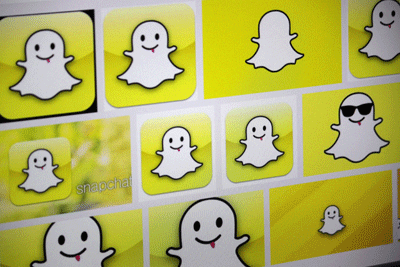 Do you ever get picture text messages? Do you wish those picture messages would only appear visible for 10 seconds (or less), then suddenly disappear forever?
Do you ever get picture text messages? Do you wish those picture messages would only appear visible for 10 seconds (or less), then suddenly disappear forever?
Yeah, me neither. But believe it or not, that’s essentially what the world’s hottest social app currently does. You may have heard of it: Snapchat. The name is easy enough to break down. Snap a photo (or short video) and send it to your friends as a way of chatting. But Snapchat has decided that these multimedia messages should have a very short shelf life. Depending on the settings of the sender, the picture/video will only be visible for up to 10 seconds, and then will never be visible again.
Snapchat alleges that the messages are erased from their servers after viewing, although there is some question about the true impermanence of sent “Snaps.” One of the co-founders said the temporary nature of Snaps is meant to prevent people from adhering to a cultivated and carefully planned social media appearance – basically, they wanted to encourage genuineness.
Additionally, there’s another feature on Snapchat that allows you to post a photo/video to the “My Story” page, where your friends can view it an unlimited number of times. But even then, the photo/video will only stay visible for 24 hours.
So what has the popularity of this peculiar app taught us about the modern consumer?
The latest and greatest still wins
Remember Myspace? The social media site created by that Tom guy, the site everybody was on? That seemingly unstoppable juggernaut went down in flames (although did you know it’s still around?). And although its social media successor, Facebook, continues to dominate, young people are bolting the site at an alarming rate. The reason: just as with fashion and technology, we always want the latest and greatest in social media, and that’s precisely what Snapchat is.
The popularity of such a strange and quirky app just goes to show that people will flock to the newest product – as long as it has some sort of unique or appealing feature.
The selfie reigns supreme
Don’t act like you don’t know what a selfie is. It’s become such a popular term, even the Merriam-Webster Dictionary added it all the way back in May. And remember the Ellen DeGeneres Oscar selfie that “broke Twitter?”
Well, thanks to Snapchat’s popularity, we know that people absolutely love selfies. In fact, the camera function on the app defaults to the front-facing camera – it’s encouraging you to take selfies. What does that mean about our society? Are we becoming increasingly more narcissistic? Are the youth of America selfish? Is all of Western society going to collapse?
I don’t know about any of that, but one thing is clear: Snapchat users love to take pictures of themselves. Taking advantage of the popularity of the selfie may be something you want to think about with your own social media efforts. Perhaps you should ask your boss to take a selfie. And please, when you ask him/her, take a picture of their face and send it to me. That should be priceless.
(Some) people aren’t that concerned with privacy
Even though Snaps disappear, it’s entirely possible to take a screenshot of any photo you are sent. And as I mentioned briefly above, there are some concerns with the storage of Snaps that have allegedly “disappeared forever,” but that hasn’t hurt the popularity of the app one bit. Today’s youth are so used to broadcasting their entire lives online, they just don’t seem that concerned with privacy.
On a slight side note, you should assume that anything you send via text/internet isn’t private. Chances are, no one will ever see that sensitive photo you sent to your spouse – but once it’s out in the ether, it’s entirely possible that someone could see it. So keep that in mind the next time you’re about to hit send.


Comments